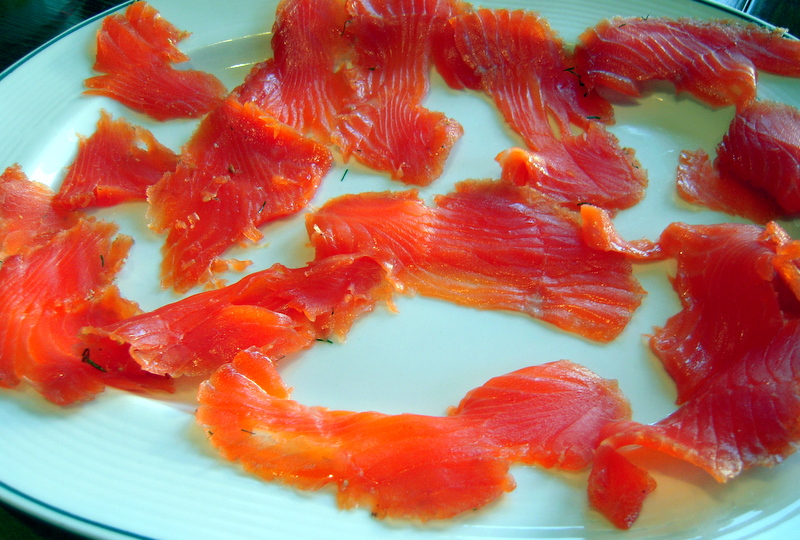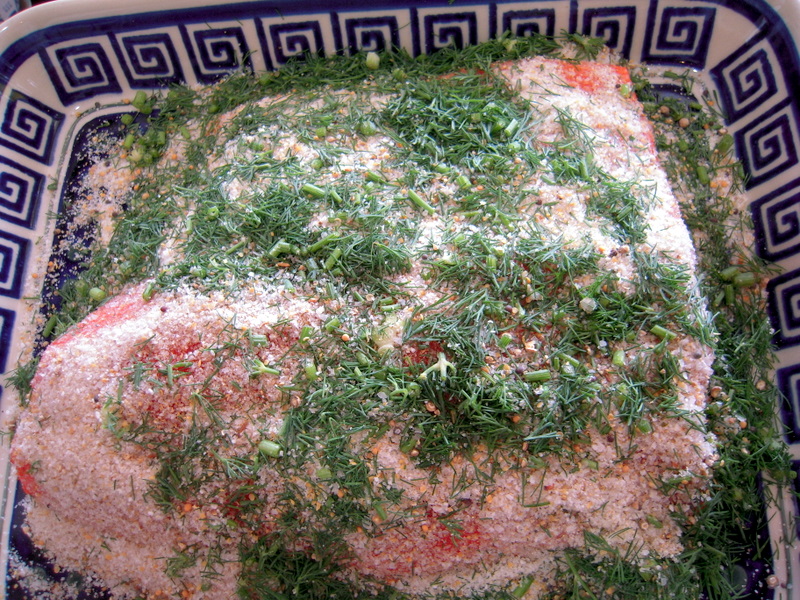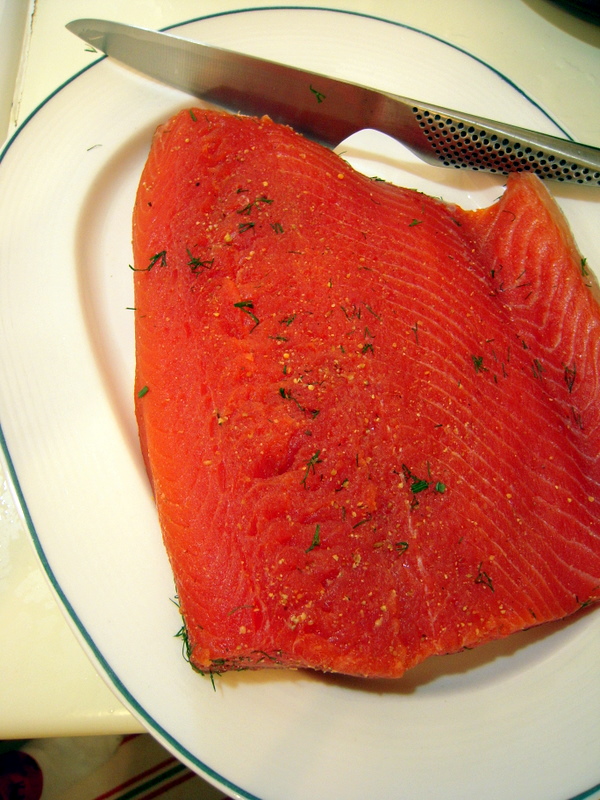I made my very first gravlax!
Last week I got into a long conversation with my Michigan friend, J, about the popularity of cured fish in that state. Apparently everyone has their own family recipe for making cured fish there, often handed down form generation to generation. We don’t have that in my family.
I love most cured fish, such as salmon, mackerel, herring and white fish. It’s really popular at delis in New York. Making it at home myself seemed intimidating but I finally decided that it would be a nice adventure.
My former boss in NYC recommended a cold cured gravlax, which didn’t require smoking. It’s simply practical there. How can you easily smoke fish in a tiny New York apartment without setting the fire alarms off and driving the neighbors insane?! If you were my neighbor, I’d be the first to complain about the smell.
I was a little apprehensive about this dish. After all, it’s “raw” fish that you leave out then refrigerate for a while. Sounds really weird! But it turned out good. It even reminded me of New York deli food. Wow! Next time I’m doubling the batch so I can give some to Steven’s workmate, Heather. She recently presented us some homemade smoked salmon that her husband made that was incredible. Thank you guys!
Before making the dish I did some research to find out the etymology of the word gravlax. In Swedish, grav means to bury and lax or lox as it is called on the East Coast means salmon… so surprise: gravlax means buried salmon. That’s how they made this deliciousness originally, by burying it in sand with spices until fully cured and ready to eat. Modern gravlax is “buried” in dry brine and then cured in the fridge for a couple of days. I adapted this recipe from one at group recipes.
Cold Cured Gravlax
1¾ lb wild boneless salmon in a single piece, scaled, skin left on
½ bunch chopped fresh dill
¼ cup sugar
½ cup kosher salt or other non-iodized salt*
1 tsp yellow mustard seeds
1 tsp black mustard seeds
1 tsp white pepper corn
tools:
5 lb weight (I used four bags of beans)
1 ceramic or glass tray (must be non-reactive vessel)
Cling film
1 flat tray to hold weight over fish
Using a mortar or an electric grinder, pulverize white pepper corns. Then add mustard seeds and pulse again to grind coarsely. Transfer to a bowl and mix with sugar and salt. Set aside the “dry brine.”
Rinse then dry salmon with paper towels. Poke skin a few times with a fork or sharp knife.
Make a mound with half of the dry brine at the bottom center of ceramic or glass tray. Sprinkle with half of chopped dill. Place salmon, skin down over salty mound. Cover salmon with remaining dry brine and dill. Place the tray over prepared salmon and add weights on top. Wrap with cling film to cover completely. Let rest at room temperature for 3 hours in a cool area. Our living room was about 63F that day. If it’s too hot, let rest for a shorter period of time. Then transfer the tray to the bottom part of your fridge and cure for 48 hours, turning fish two or three times during curing. Be sure to keep weight on it throughout curing.
Remove from fridge. Unwrap and rinse fish under running cold water to remove excess brine. Dry with a paper towel. Lay on a flat surface and slice thinly on the bias diagonally with a sharp knife. Serve it as is or with toast, bagels, or white rice. We had ours with a bottle of Domaine de la Becassonne blanc. We’re lucky to have a few bottles left. Look for the 2009 this fall! I’ve heard that’s supposed to be even better than ’08.
obs: Kosher salt is coarse and less salty than sea/mined salts, use less salt if the only salt you have available are these. Besides using non-iodized salt also avoid flavored gourmet salts, the will impart flavors to the fish you might not like. Next time I will even reduce or leave the dill out. The salmon flavor alone is already incredible.


